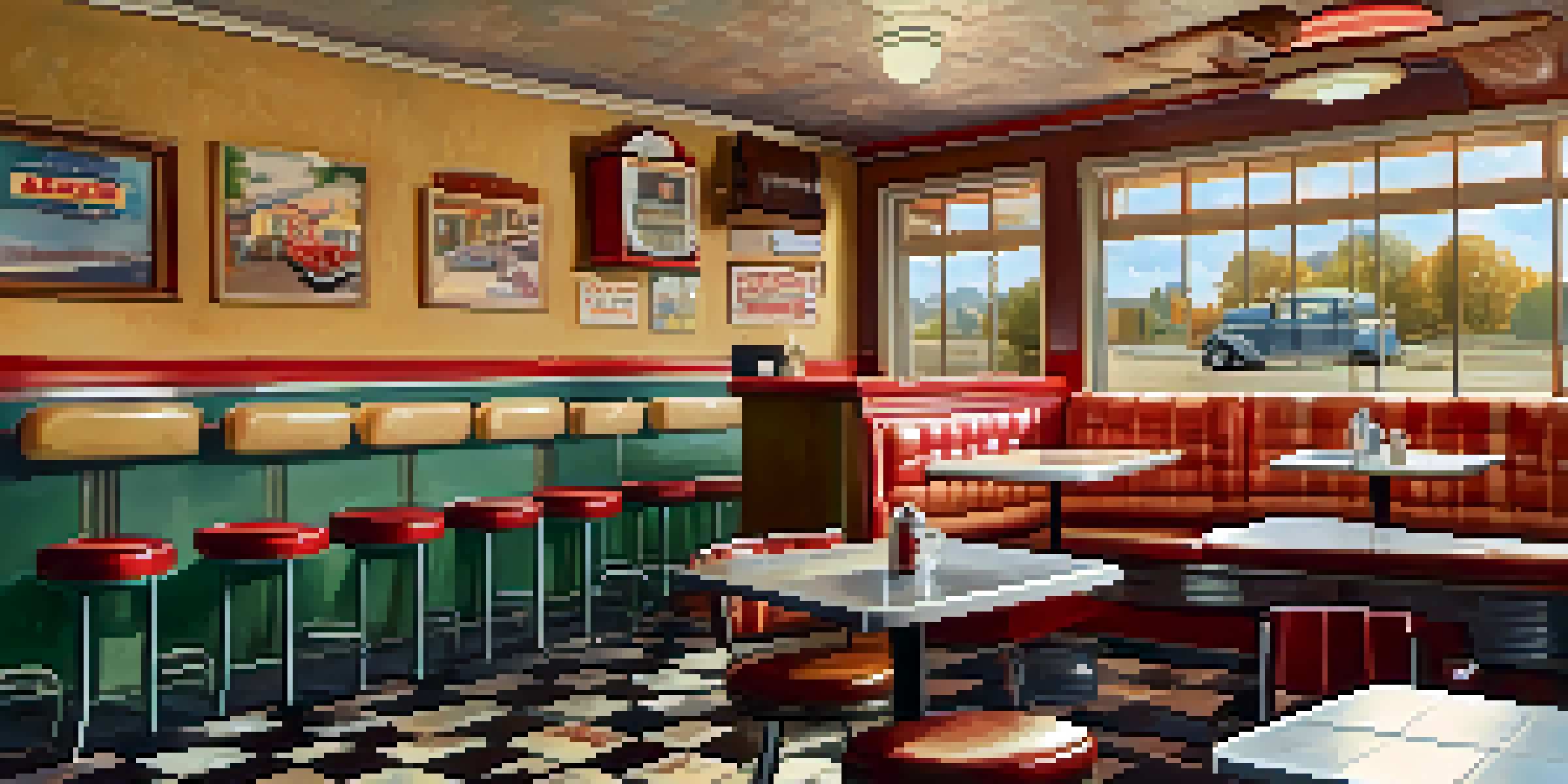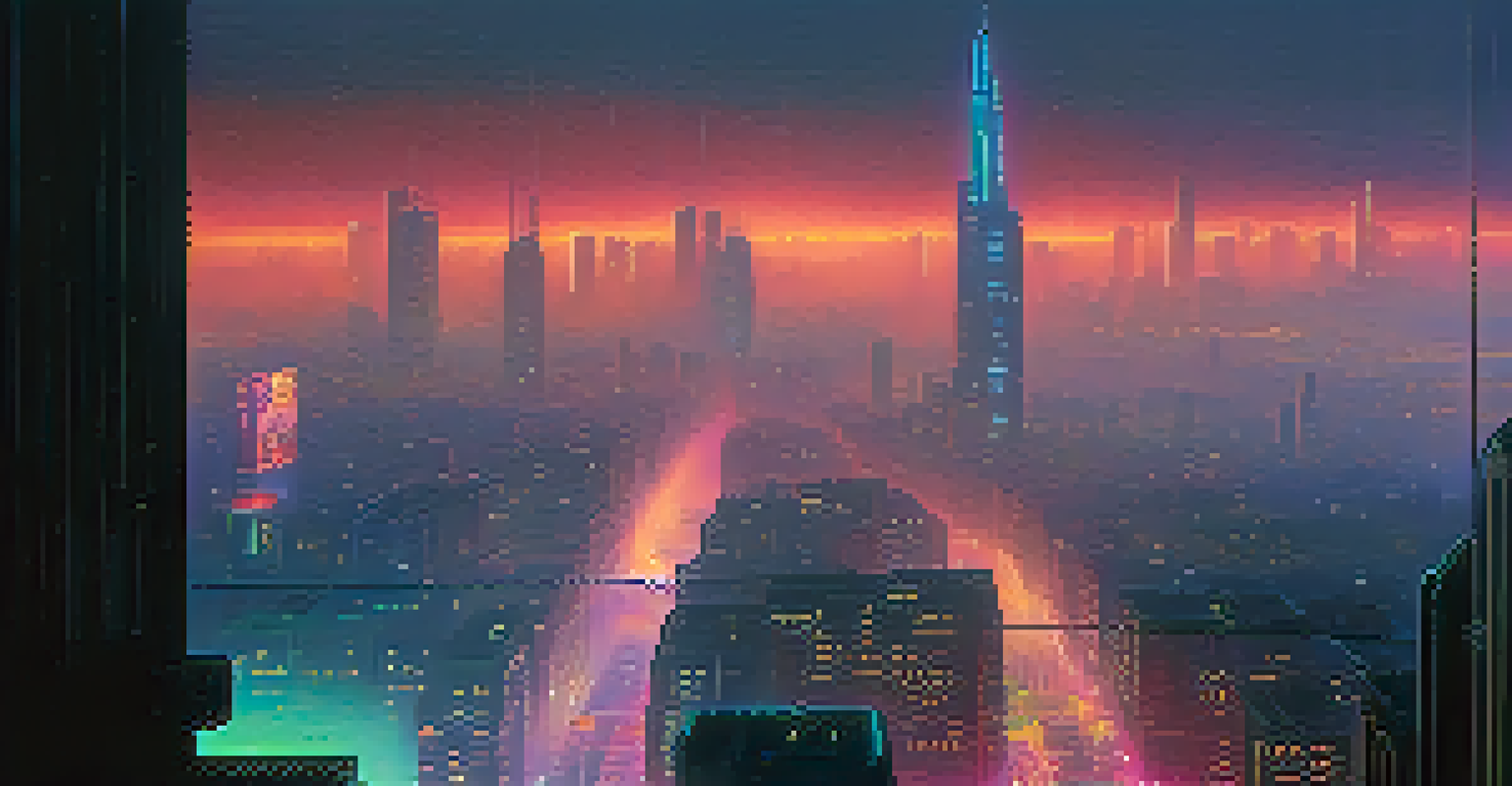Iconic Set Pieces: Art Direction's Contribution to Film Legacy

The Importance of Art Direction in Film
Art direction is the backbone of a film's visual storytelling. It involves creating the environment where the story unfolds, influencing everything from the mood to the character development. Think of a vividly designed set as a character in its own right, one that interacts with the actors and shapes the narrative.
Art is the most beautiful of all lies.
By carefully selecting colors, textures, and props, art directors help filmmakers convey deeper meanings and emotions. For instance, the warm, inviting colors of a small-town diner can evoke nostalgia, while stark, cold industrial settings might suggest isolation. This nuanced approach is what makes art direction an essential element of cinematic artistry.
Ultimately, art direction not only enhances the viewing experience but also contributes to a film's legacy. When audiences remember a movie, they often recall the striking visuals that left a lasting impression, illustrating the crucial role of art direction in shaping cinematic history.
Iconic Set Pieces That Define Genres
Certain set pieces have become iconic, defining entire genres through their unique designs. For example, the dark, gothic architecture of Tim Burton's 'Batman' set the standard for superhero films, creating a moody atmosphere that contrasts sharply with the bright colors often seen in earlier comic adaptations. This set not only served the narrative but also influenced subsequent films in the genre.

Similarly, the lush, vibrant landscapes of 'Jurassic Park' created a thrilling sense of wonder and danger that captivated audiences. The detailed craftsmanship of the sets, combined with groundbreaking special effects, helped transport viewers into a world where dinosaurs roamed freely. This blend of art direction and technology is a testament to how set design can elevate a film.
Art Direction Shapes Film Narrative
Art direction sets the visual tone and environment, influencing the mood and emotional depth of the story being told.
These iconic set pieces do more than just look good; they help shape viewer expectations and experiences. They become synonymous with the films they inhabit, creating a lasting impact that transcends generations of moviegoers.
The Evolution of Set Design Across Eras
Set design has evolved dramatically over the decades, reflecting changes in technology, culture, and audience expectations. In the early days of cinema, filmmakers relied heavily on practical sets, often constructed on soundstages or in studios, with limited resources to create their visions. However, as technology advanced, so did the possibilities for art direction.
The only way to do great work is to love what you do.
The introduction of CGI (computer-generated imagery) brought a new dimension to set design, allowing filmmakers to create fantastical worlds that were previously unimaginable. Films like 'Avatar' showcase how digital artistry can complement traditional set design, creating immersive environments that pull viewers into the story. This evolution demonstrates the adaptability of art direction in responding to technological advancements.
Today, blending practical effects with CGI is common, offering filmmakers a wide range of tools to craft their narratives. The evolution of set design continues to inspire creativity, pushing the boundaries of what is possible in film and ensuring that art direction remains a vital part of cinematic storytelling.
Cultural Significance of Set Pieces
Set pieces often reflect cultural values and societal norms, making them a mirror of the times. For instance, the opulent sets in 'The Great Gatsby' capture the excess of the Jazz Age, immersing viewers in a world of wealth and glamour. This careful attention to detail not only enhances the story but also provides insight into the era's cultural landscape.
Moreover, iconic set designs can become symbols of larger movements within film history. The minimalist aesthetic of the 'Blade Runner' cityscape, for example, reflects the anxieties of a dystopian future, resonating with contemporary audiences and sparking discussions about technology's role in society. Such designs engage viewers on multiple levels, enriching the cinematic experience.
Iconic Sets Define Film Genres
Certain set pieces have become synonymous with genres, leaving a lasting influence on audience expectations and cinematic style.
In this way, set pieces do more than just serve a functional purpose; they become cultural artifacts that can influence public perception and inspire conversations long after the credits roll.
Collaboration Between Directors and Art Directors
The relationship between directors and art directors is crucial for creating compelling set pieces. Directors often have a vision that they want to bring to life, and art directors translate that vision into tangible designs. This collaboration can lead to breathtaking visuals that enhance the story, as seen in films like 'Inception,' where layered realities are vividly brought to life through intricate set designs.
Art directors must understand the director's intent while also infusing their creativity into the project. This balance is essential for achieving a cohesive look that resonates with audiences. When both parties work in harmony, the result is a seamless integration of story and visual artistry, elevating the film as a whole.
Ultimately, this collaborative effort results in iconic set pieces that stand the test of time. The synergy between directors and art directors is a vital aspect of filmmaking, underscoring the importance of teamwork in creating enduring cinematic experiences.
Iconic Set Pieces in Modern Cinema
Modern cinema continues to showcase iconic set pieces that capture the imagination of audiences. Films like 'Mad Max: Fury Road' and 'The Grand Budapest Hotel' are prime examples where art direction plays a pivotal role. The stark, post-apocalyptic landscapes in 'Mad Max' are not just backdrops; they are integral to the film's narrative and themes of survival and chaos.
Similarly, the whimsical sets of 'The Grand Budapest Hotel' create a unique visual style that complements the film's storytelling. Each meticulously crafted space reflects the quirky nature of the characters and their adventures, making the set an essential part of the film's charm. These modern examples illustrate how innovative art direction continues to push boundaries and redefine cinematic storytelling.
Collaboration Enhances Visual Storytelling
The synergy between directors and art directors is essential for creating compelling visuals that seamlessly integrate with the narrative.
As filmmakers explore new techniques and technologies, the potential for creating iconic set pieces only expands. The future of film art direction holds exciting possibilities, promising to keep audiences captivated by the visual magic of cinema.
The Lasting Legacy of Iconic Set Pieces
Iconic set pieces leave an indelible mark on both film history and popular culture. They become references in other media, influencing everything from advertising to themed attractions. For instance, the distinctive design of the Death Star in 'Star Wars' has inspired countless parodies and homages, cementing its place in the cultural lexicon.
Moreover, these set pieces often evoke nostalgia, becoming touchstones for fans who revisit their favorite films. The intricate details of a beloved set can transport viewers back to the emotions they felt while watching the movie for the first time, creating a powerful connection between the audience and the film.

As we celebrate the artistry of set design, it's clear that these iconic pieces are not merely decorations—they are integral components that enrich the storytelling experience and contribute to the legacy of cinema itself.